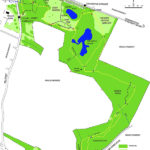
By Jeffrey North
Belmont’s 119-acre Lone Tree Hill conservation area, like many recreational lands in the region, is plagued by the insidious creep of invasive plant species. The ecological value of this forest and meadow conservation land is depreciating due to a host of invasive plants that act like predators, harming native plants from oak trees to ferns, forbs, and shrubs. Asiatic bittersweet, for example, has enveloped oak, hickory, and pine trees, covering, killing, and felling a number of these tall trees that define the edge of the meadow and the land’s viewshed. Glossy buckthorn and honeysuckle are killing gray dogwoods. Garlic mustard displaces both native flora and fauna; it produces root exudates that inhibit the growth of important soil fungi, and leaf chemicals that kill native butterfly larvae which feed on it. Patches of Japanese knotweed, currently small and limited in their footprint on Lone Tree Hill, will expand unless treated, overtaking every other plant in their expanding vicinity. The ecological condition of this valuable regional conservation area will only deteriorate unless action is taken to preserve it.
With matching support from the Judy Record Conservation Fund, the Land Management Committee for Lone Tree Hill (LMC) agreed at its March 4 meeting to engage local firm Parterre Ecological to study the property and produce a plan for remediation and ongoing maintenance against invasive plant infestations. Ecological restoration professionals Ryan Corrigan and Miles Connors presented the Invasive Plant Management and Native Plant Restoration Plan to the LMC at its May 7 meeting.
The plan includes a mapped, prioritized inventory of invasive plants at sites across the property, and creates over 25 projects for removal and replanting, each with recommendations for initial treatment and ongoing maintenance.
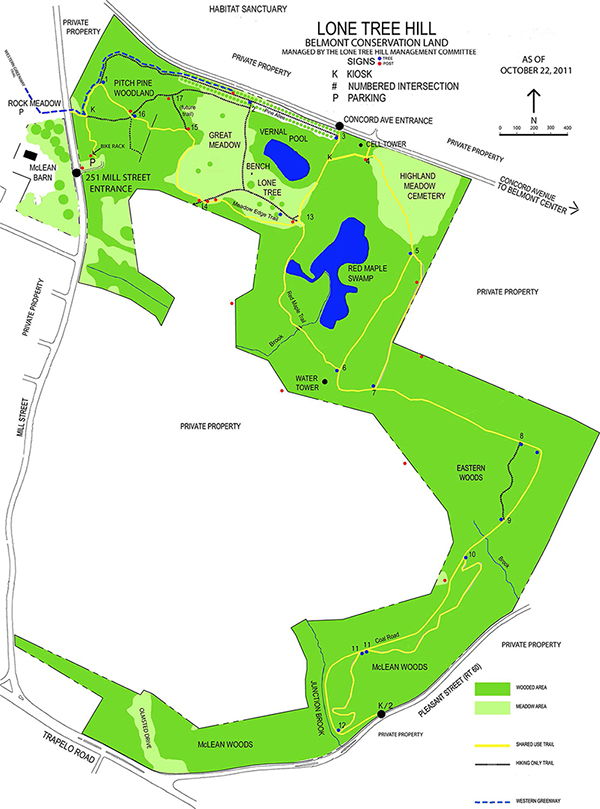
A map of Lone Tree Hill. Light green marks meadow areas: darker green indicates forests. Graphic by Town of Belmont.
The map of the entire property was divided into three sections, further subdivided into zones, to illustrate specific invasive species populations and strategies for their control. For example, the top priority is the most visually prominent parcel on the property, between the parking lot on Mill Street and the wooded area to the west of the meadow, labeled Area A1. It is a dense invasive bramble that surrounds the western border of the Great Meadow. This area contains dead native vegetation and thick stands of invasive plants. The recommendation is that Area A1 should be cut by a forestry mower, seeded with meadow plants, and replanted with native shrubs further into the forested edge.
In some portions of Area A1, glossy buckthorn (Frangula alnus) has completely overwhelmed the native plant community. This monoculture lacks insect diversity which forms the basis of the food web.
The plan calls for contractor mowing within the 133,000 square foot area where dense invasive shrubs have overwhelmed the tree canopy. The remaining trees will be lost without professional intervention.
The LMC asked Parterre to identify areas requiring professional attention as well as sub-parcels that could be remediated by volunteers. The plan indicates the degree of treatment difficulty for each of the 25 project areas. The northern border with Concord Avenue, for example, contains a healthy pitch pine/oak forest with isolated patches of glossy buckthorn. These buckthorn patches can be managed by cutting and herbicide treatment by licensed professionals and maintained by volunteers to prevent self-seeding.
Recommended habitat interventions include provision for bird and wildlife food, nesting cavities for birds, shelter for mammals, exposed bark for bats, nutrients for the soil, and even a moist forest floor for reptiles and amphibians. Cut and stacked invasive plants can be left on site to mimic the benefits of downed logs to offer shelter (“critter condos”) in areas where invasive species are being removed.
All is not dire on Lone Tree Hill. There is a stark contrast of ecological health on either side of the red maple wetland brook, with moderate stands of invasive buckthorn stands to the west and a diverse mix of summersweet, highbush blueberry, and black cherry to the east. The property is worthy of restoration to return more of the acreage to a similar healthy state.
The plan will enable stewards and stakeholders to decisively move forward on meadow, edge, and forest restoration work. The plan contains bid specifications for the larger projects, while allowing the LMC to assign the smaller projects to any of several qualified companies or volunteer efforts. Finally, the plan is presented in terms of which tasks are best performed at certain times of the year, with a management calendar for treatment, mowing, and monitoring.
Without intervention, the area will continue its ecological decline until the meadow is overrun and the forest is decimated. Belmont residents may recall what the area looked like before its restoration in 1999: a mass of impenetrable vines and thorns (bittersweet, buckthorn, multiflora rose, poison ivy, tree of heaven, and more) in place of the inspiring meadow that we enjoy today. With this report, members of the LMC are pleased to have a working document that provides definitive steps for managing invasive species at Lone Tree Hill, and ultimately guiding the conservation area to a healthier, more diverse ecosystem for all visitors (and resident and itinerant fauna) to enjoy.
The LMC expects to move forward on the Plan by engaging a team of professionals, with matching financial support from the Judy Record Conservation Fund, to begin the prescribed restoration strategy in the shrub layer of the Area A1 woodland, including cutting, mowing, and plant-specific herbicide application. Additional projects will be undertaken as resources allow.
The complete plan is available on the Belmont town website.
The Land Management Committee for Lone Tree Hill is deeply grateful to the trustees of the Judy Record Conservation Fund for their continuing support of the maintenance and improvement of this valuable and treasured conservation land.
Invasive Plants at Lone Tree Hill
The Invasive Plant Management and Native Plant Restoration Plan identified 12 invasive plant species growing on Lone Tree Hill along with 5 more “likely invasive species.”
Invasive plant species identified:
- Ailanthus altissima, tree of heaven
- Alliaria petiolata, garlic mustard
- Berberis thunbergii, Japanese barberry
- Celastrus orbiculatus, Asiatic bittersweet
- Cynanchum louiseae, black swallow-wort
- Euonymus alatus, burning bush
- Fallopia japonica, Japanese knotweed
- Frangula alnus, glossy buckthorn
- Lonicera morrowii, Morrow’s honeysuckle
- Lythrum salicaria, purple loosestrife
- Rhamnus cathartica, common buckthorn
- Rosa multiflora, multiflora rose
Likely invasive plant species* identified:
- Ligustrum, privet
- Malus sylvestris, wild crab apple
- Vitis spp., wild grapes
- Rhodotypos scandens, black jetbead
- Philadelphus coronarius, sweet mock orange
* While not listed as an invasive species by MIPAG (Massachusetts Invasive Plant Advisory Group), these species can dominate the shrub layer and crowd out native trees and shrubs. We recommend removing non-native crab apple along with listed invasive plant species in wetland buffers and replacing them with native shrubs and trees.
Jeffrey North is the ex-officio Belmont Conservation Commission representative on the Land Management Committee for Lone Tree Hill.

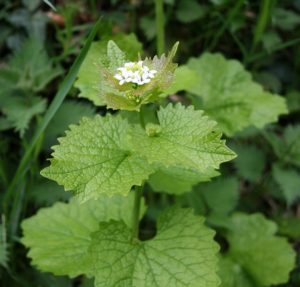
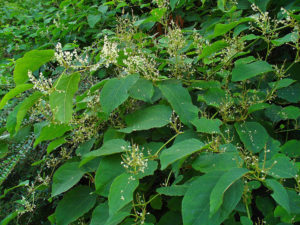
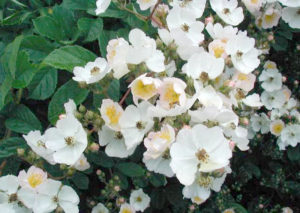

Sorry, the comment form is closed at this time.